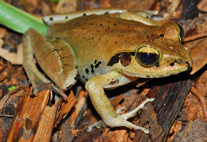Abstract
The monogeneric subfamily Novophytoptinae is a separate lineage of phytoptids restricted to endoparasitism on herbaceous monocots of the order Poales. Novophytoptines live under the epidermis of their hosts where they feed on parenchymatous cells and reproduce therein. It is unknown yet how novophytoptines penetrate the plant epidermis, but preliminary observations indicate that they might be able to penetrate through circular holes which they cut in the epidermis using their modified gnathosoma. Two new species, Novophytoptus luzulis n. sp. from Luzula pilosa L. and Novophytoptus maritimus n. sp. from Juncus maritimus Lam., are described and illustrated. Two small pores, presumably representing external openings of spermathecal tubes, were found in the postero-medial genital cuticle (sensu Chetverikov 2014b) at the level between the posterior margin of the genital coverflap and the genital rim, in both new species. This is the first documented report of such structures in slide-mounted eriophyoid mites. CLSM and DIC microscopy-based observations showed that novophytoptines possess a peculiar spermathecal apparatus, including greatly expanded sack-shaped spermathecae and thick, bent spermathecal tubes directed anteriad, and a semicircular anterior genital apodeme perpendicular to the long body axis. Similarity in the structure of the spermathecal apparatus among novophytoptines, phytoptines and sierraphytoptines (all Phytoptidae from angiosperms) apparently supports their assignment to a common group. Additional examples of endoparasitism among Eriophyoidea are listed. The hypothesis of a primary endoparasitic life style in the eriophyoid basal stalk and a secondary shift to free living forms on exposed surfaces of plants is briefly discussed. Research on grass-associated endoparasitic mites is important because they may include new vectors of pathogens. SketchUp Free Software is recommended as one of the most simple and promising 3D drawing tools for modeling the internal genitalia and other complex anatomical structures of microarthropods (especially eriophyoids) based on digital data obtained using various microscopic techniques such as CLSM.

